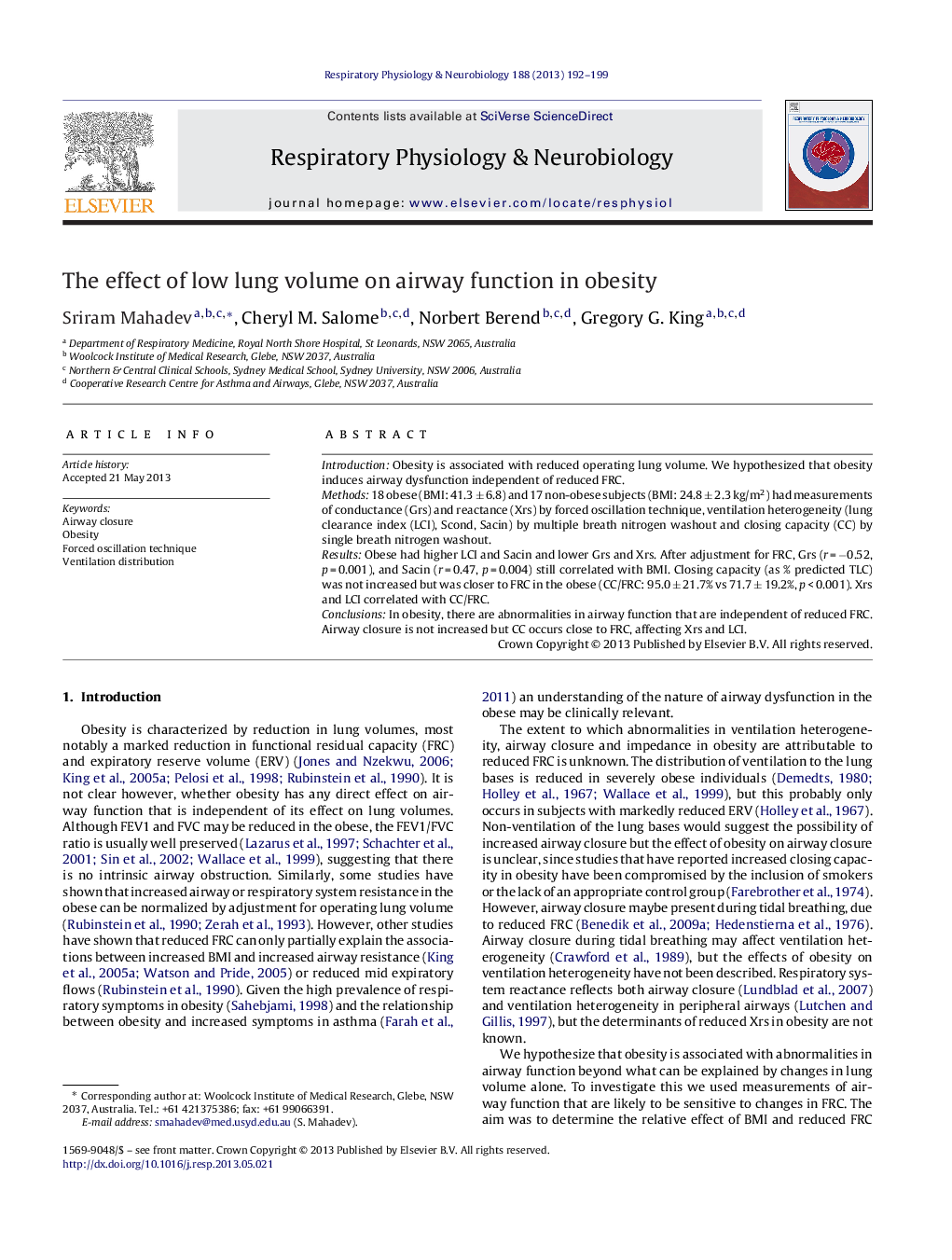| Article ID | Journal | Published Year | Pages | File Type |
|---|---|---|---|---|
| 2847232 | Respiratory Physiology & Neurobiology | 2013 | 8 Pages |
•Obesity is associated with reduced operating lung volume.•Breathing at low operating lung volume leads to airway closure during tidal breathing.•Airway closure does not begin earlier in exhalation in the obese.•Low lung volume and tidal airway closure affects airway function.•After accounting for lung volume, abnormalities in ventilation heterogeneity in very peripheral airways and in airway caliber persist.
IntroductionObesity is associated with reduced operating lung volume. We hypothesized that obesity induces airway dysfunction independent of reduced FRC.Methods18 obese (BMI: 41.3 ± 6.8) and 17 non-obese subjects (BMI: 24.8 ± 2.3 kg/m2) had measurements of conductance (Grs) and reactance (Xrs) by forced oscillation technique, ventilation heterogeneity (lung clearance index (LCI), Scond, Sacin) by multiple breath nitrogen washout and closing capacity (CC) by single breath nitrogen washout.ResultsObese had higher LCI and Sacin and lower Grs and Xrs. After adjustment for FRC, Grs (r = −0.52, p = 0.001), and Sacin (r = 0.47, p = 0.004) still correlated with BMI. Closing capacity (as % predicted TLC) was not increased but was closer to FRC in the obese (CC/FRC: 95.0 ± 21.7% vs 71.7 ± 19.2%, p < 0.001). Xrs and LCI correlated with CC/FRC.ConclusionsIn obesity, there are abnormalities in airway function that are independent of reduced FRC. Airway closure is not increased but CC occurs close to FRC, affecting Xrs and LCI.
